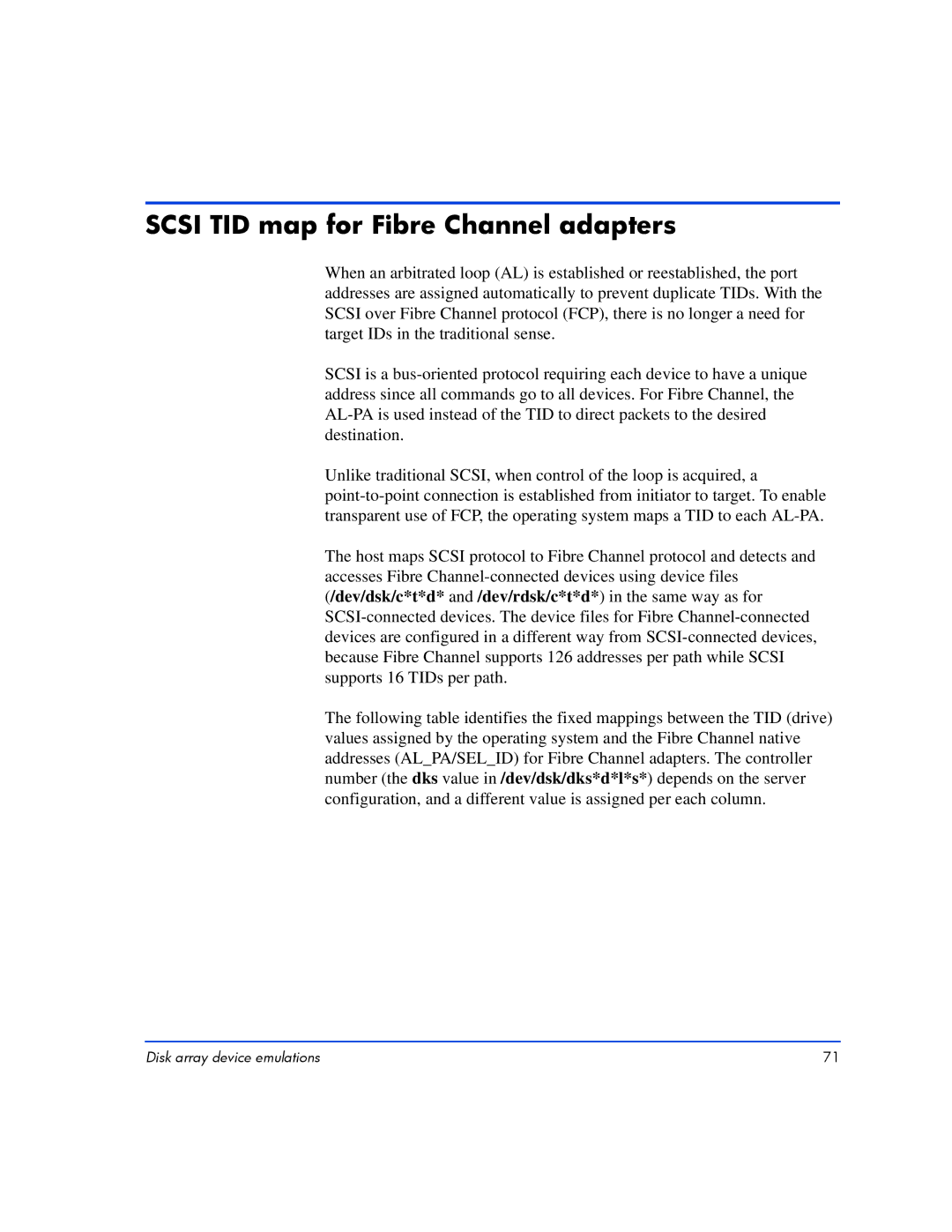
SCSI TID map for Fibre Channel adapters
When an arbitrated loop (AL) is established or reestablished, the port addresses are assigned automatically to prevent duplicate TIDs. With the SCSI over Fibre Channel protocol (FCP), there is no longer a need for target IDs in the traditional sense.
SCSI is a
Unlike traditional SCSI, when control of the loop is acquired, a
The host maps SCSI protocol to Fibre Channel protocol and detects and accesses Fibre
The following table identifies the fixed mappings between the TID (drive) values assigned by the operating system and the Fibre Channel native addresses (AL_PA/SEL_ID) for Fibre Channel adapters. The controller number (the dks value in /dev/dsk/dks*d*l*s*) depends on the server configuration, and a different value is assigned per each column.
Disk array device emulations | 71 |
